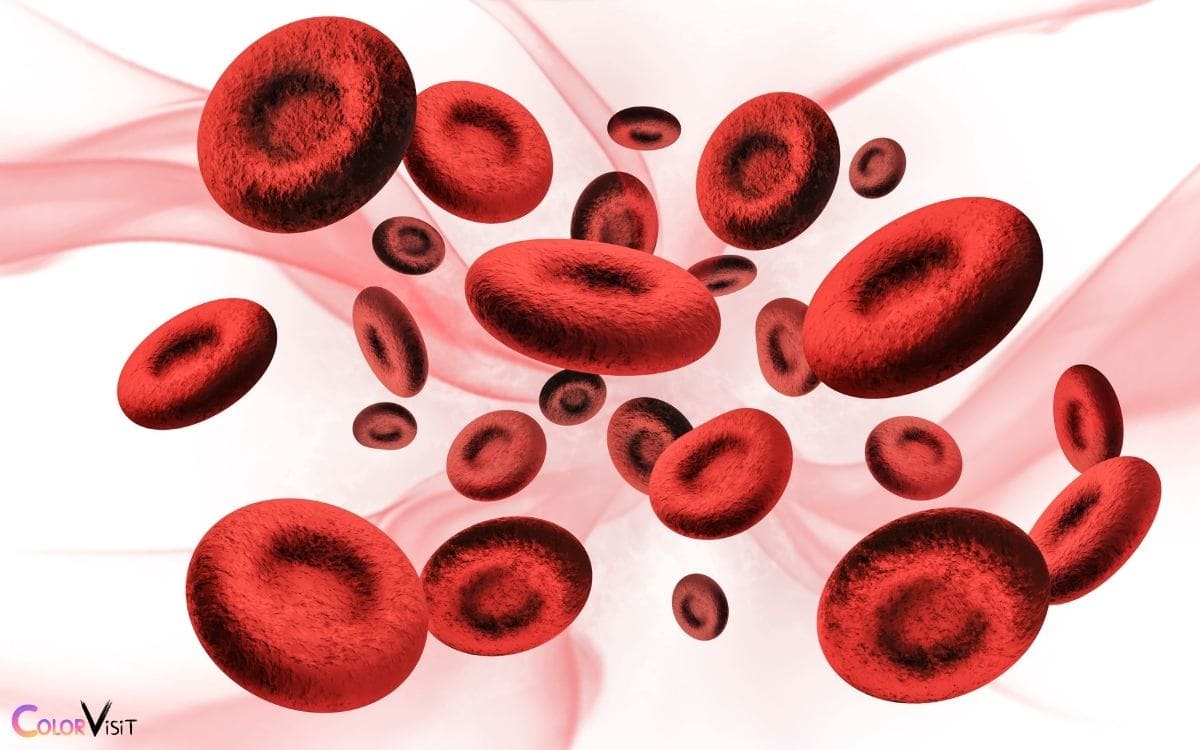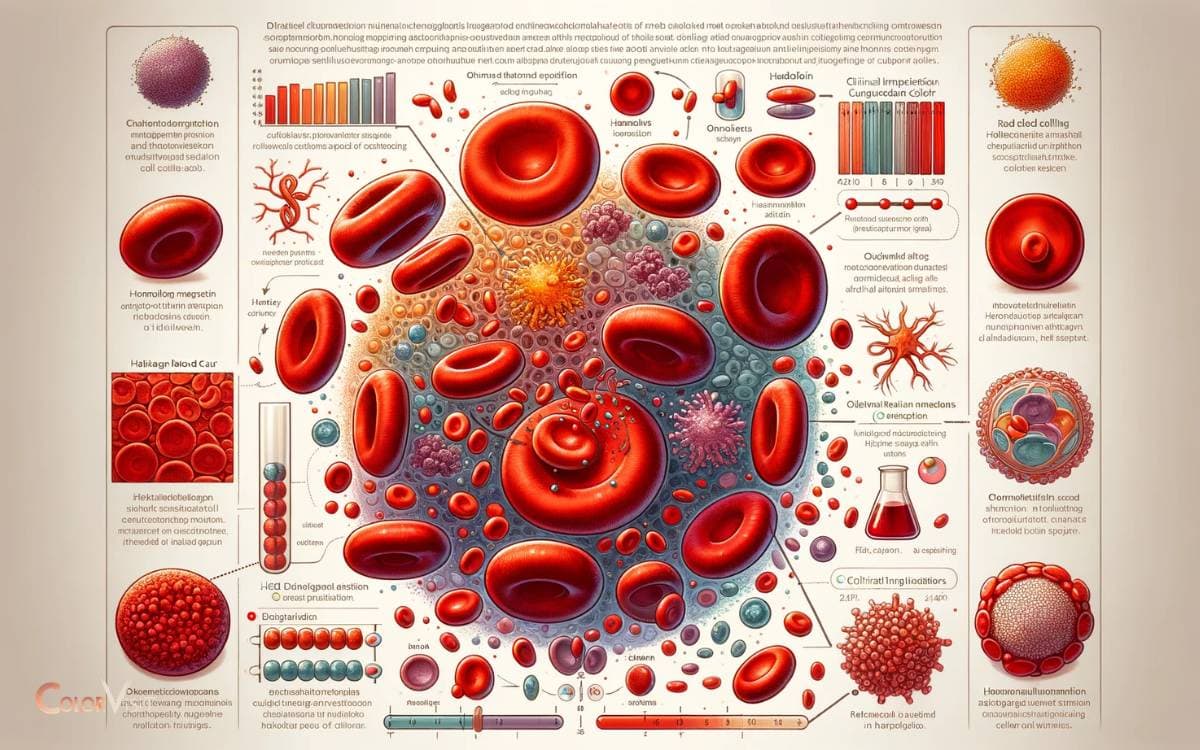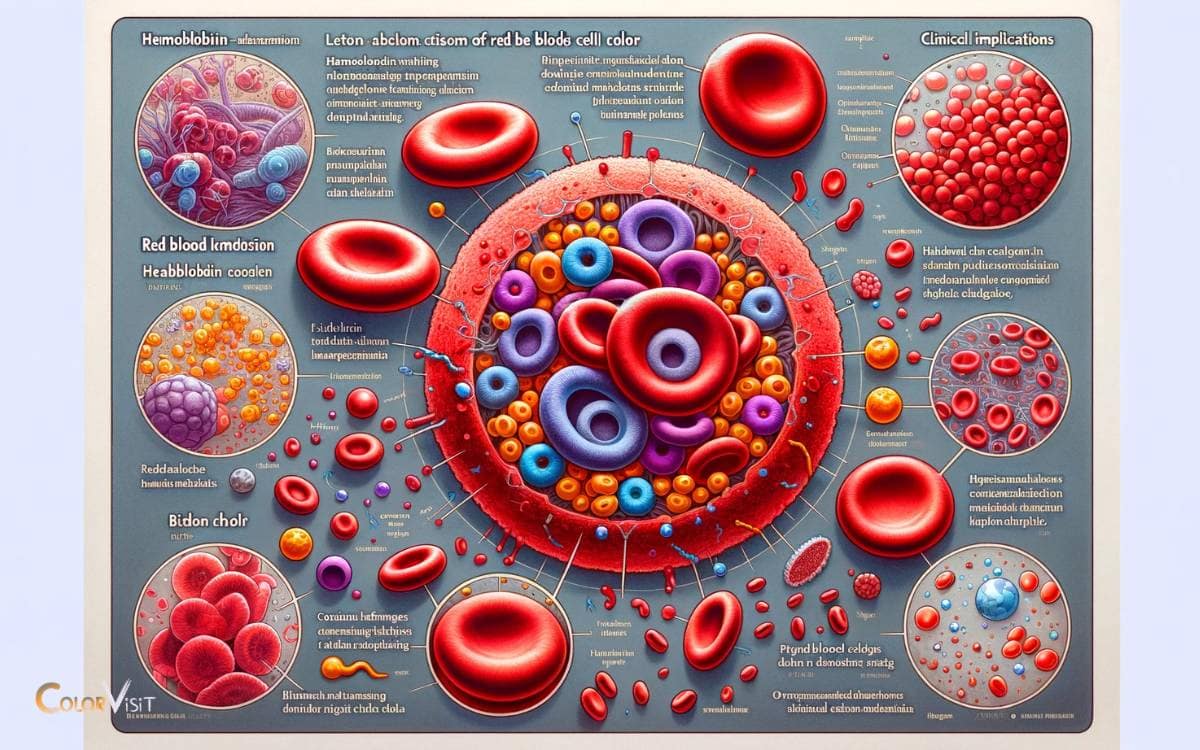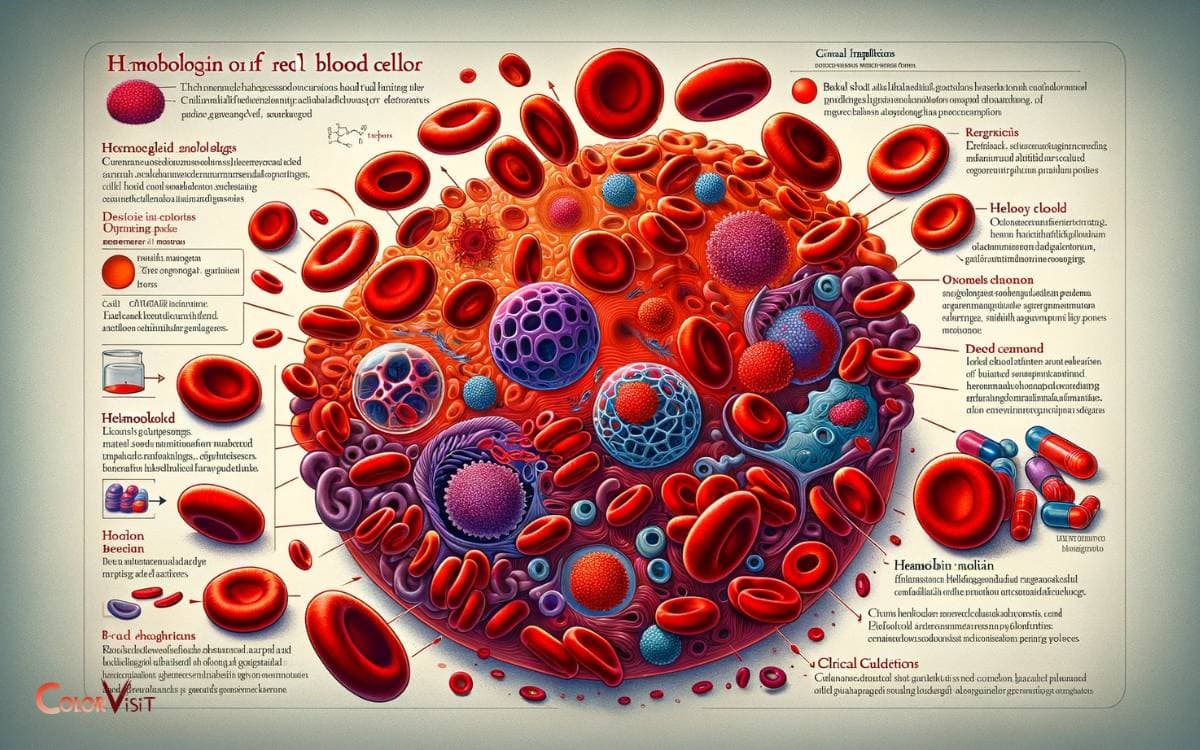How Do Red Blood Cells Get Their Color? Hemoglobin!
Red blood cells get their color from a protein called hemoglobin, which binds to oxygen and gives these cells their red hue.
The color varies based on the oxygen content, appearing bright red when fully oxygenated and darker when it lacks oxygen.
Hemoglobin, the protein found within red blood cells, is responsible for their red color. Hemoglobin contains iron, which interacts with oxygen to create a red tint.
When hemoglobin binds with oxygen in the lungs, it forms oxyhemoglobin, a bright red substance. In contrast, deoxygenated hemoglobin or reduced hemoglobin, found in veins, is a darker red.
The red color of our blood cells is due to the binding of oxygen to the iron-rich protein hemoglobin. This color can range from bright red to dark red, depending on the oxygen saturation levels.
Key Takeaway
The Role of Hemoglobin in Red Blood Cells
Hemoglobin, a complex protein molecule found in red blood cells, plays a crucial role in determining the color of these cells.
- The structure of hemoglobin consists of four globular protein subunits, each containing a heme group that binds to oxygen. This unique molecular arrangement gives red blood cells their characteristic red color when oxygenated.
- As blood travels through the body, hemoglobin facilitates the transport of oxygen from the lungs to the tissues, where it is essential for various metabolic processes.
- The reversible binding of oxygen to hemoglobin allows for efficient oxygen delivery and release, ensuring the vital functions of the body are adequately supported.
Understanding the intricate relationship between hemoglobin structure and oxygen transport is crucial for advancing innovations in medical treatments and therapies.
Oxygen Binding and Coloration Process
Red blood cells acquire their characteristic red color through a process involving the binding of oxygen to the hemoglobin protein, resulting in the formation of oxyhemoglobin.
- This process is crucial for oxygen transport in the body. The coloration of oxyhemoglobin is directly related to its oxygen saturation, which influences its light absorption properties.
- When oxygen binds to hemoglobin, it changes the molecular structure, affecting the way light is absorbed and reflected.
- This phenomenon is fundamental for the functioning of red blood cells, as it determines their ability to carry and release oxygen to tissues throughout the body.
Understanding the intricate relationship between oxygen binding, coloration, and light absorption in oxyhemoglobin is essential for advancing research in fields such as biomedical engineering and clinical diagnostics.
| Oxygen Saturation | Coloration | Light Absorption |
|---|---|---|
| High | Bright red | Higher |
| Low | Dark red | Lower |
| Normal | Red | Moderate |
Factors Affecting Red Blood Cell Color
The oxygen saturation of hemoglobin significantly influences the coloration and light absorption properties of red blood cells, with variations in saturation levels resulting in observable changes in the color and optical characteristics of oxyhemoglobin.
- Factors such as genetics, diseases, aging, and dietary influences can also affect red blood cell color.
- Additionally, environmental factors, such as industrial exposures, can impact the coloration of red blood cells.
- The variation across individuals in terms of their red blood cell coloration and pigments is an area of ongoing research, with the role of oxygenation and its influence on red blood cell color being of particular interest.
Understanding the diverse factors affecting red blood cell color could potentially lead to innovative approaches in diagnosing and monitoring various health conditions.
Comparing Red Blood Cell Color Across Species
Across different species, the coloration of red blood cells varies significantly, reflecting diverse evolutionary adaptations and physiological needs.
- The evolutionary significance of these variations raises intriguing questions about how different species have adapted to their environments.
- Pigment variations in red blood cells play a critical role in oxygen transport and can impact an organism’s overall physiology.
- Understanding the specific pigments and their distribution in red blood cells across species is essential for gaining insights into their functional significance and evolutionary history.
- Do these variations in color correspond to specific environmental conditions or metabolic demands? What are the underlying genetic mechanisms driving these differences?
- Exploring these questions can provide valuable insights into the evolution of red blood cells and their adaptation to different ecological niches.
Moving forward, it is crucial to examine the clinical implications of red blood cell color.
Clinical Implications of Red Blood Cell Color
A comprehensive understanding of red blood cell color is essential for assessing the clinical implications of variations in their pigmentation.
- Color variations in red blood cells can indicate various health conditions, such as anemia, where the cells may appear pale due to decreased hemoglobin content, or polycythemia, where the cells can appear darker due to increased hemoglobin levels.
- Additionally, the assessment of red blood cell color is crucial in the diagnosis of certain genetic disorders, such as sickle cell disease, which results in abnormal hemoglobin and a characteristic sickle shape of the cells.
- Furthermore, changes in red blood cell color can also provide insights into the effectiveness of treatments, such as in patients undergoing chemotherapy or receiving iron supplementation.
Understanding the clinical significance of red blood cell color variations is therefore vital for diagnosing and monitoring various medical conditions.
Conclusion
Red blood cells obtain their color from the hemoglobin molecule, which binds with oxygen to form oxyhemoglobin, giving the cells their distinctive red color.
Across species, red blood cell color can vary due to different hemoglobin structures and oxygen binding capacities.
In clinical settings, variations in red blood cell color can indicate health conditions such as anemia.
Interestingly, the average adult human body contains around 25 trillion red blood cells, highlighting the significance of understanding their coloration process.






